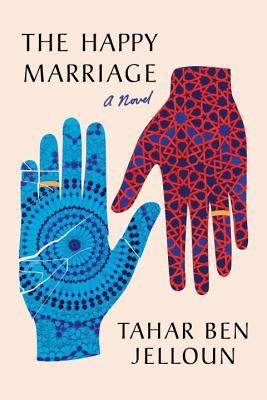
The Happy Marriage by Tahar Ben Jelloun
Translated by André Naffis-Sahely
Melville House, Brooklyn~London, 2016. 320 pages
If we are to believe that this novel is indeed the story of couple who lived happily ever after, then it means that we have never heard of Leo Tolstoy or Ingmar Bergman or Nagisa Oshima or any of the other intellectuals who keep our paraplegic protagonist mentally occupied. For this novel by Moroccan writer Tahar Ben Jelloun, winner of the International Impac Dublin Literary Award and possible candidate to the Nobel Prize for Literature, is the story of a marriage in decline and the reasons that will inexorably lead it to its fatal conclusion. To be fair, let the reader find out whether the marriage ends or is salvaged at the end of the book. Let the reader also decide who is to blame: the famous, refined, literate, high-class philandering Arab husband? Or the rough-hewn, self-taught, down-to-earth, fiery, superstitious Berber wife? Or, for that matter, is anybody to blame? Author Nagisa Oshima tells our protagonist that “Cruelty between a man and a woman is essential.”
The novel opens with a quote from Give Me Your Eyes, by Sacha Guitry: “Every sacrifice is possible and tolerable in a couple until the day when one of them realizes that there were sacrifices to make.” It then continues with a long soliloquy by The Artist, who is confined to a wheelchair after a stroke, and is unable to paint or even look after himself without assistance from his caregivers. For most of the novel, the reader is subjected to an unremitting indictment of his wife’s character and her many failures and shortcomings. The Artist, however, is man enough to admit that he has betrayed her with his numerous love affairs and acts of matrimonial dereliction enacted during luxurious solo trips abroad. But then again, in true patriarchal style, he feels entitled to his indulgences and doesn’t even bother to name his wife, merely calling her “the woman.”
It is only towards the end, when the reader gets a chance to become acquainted with her version of events, that we get to find out that she has a name – Amina – and that she is all of the things that her husband has called her, that and much more. We learn that she was devalued as a girl in the goat-herd society she hails from, that her father denied her an education, and practically sold her off to an infertile French couple who in turn provided her with some education and a ticket to France where she met her future husband. We also learn The Artist’s name: Foulane, which is the moniker she gives him, and which in Arabic means “any old guy.”
We may wonder why Tahar Ben Jelloun doesn’t name his main protagonists, but the answer is pretty obvious. It is the author’s way of saying that The Happy Marriage is the story of matrimonial dissolution in general attributed to the intersection of class, gender and tribal politics.
Maya Khankhoje reviewed Ben Jelloun’s The Sand Child for Montréal Serai before we went digital. It is the painful story of how the 8th daughter of a respected Arab man was raised as a boy so as not to bring “dishonour” to her family.








